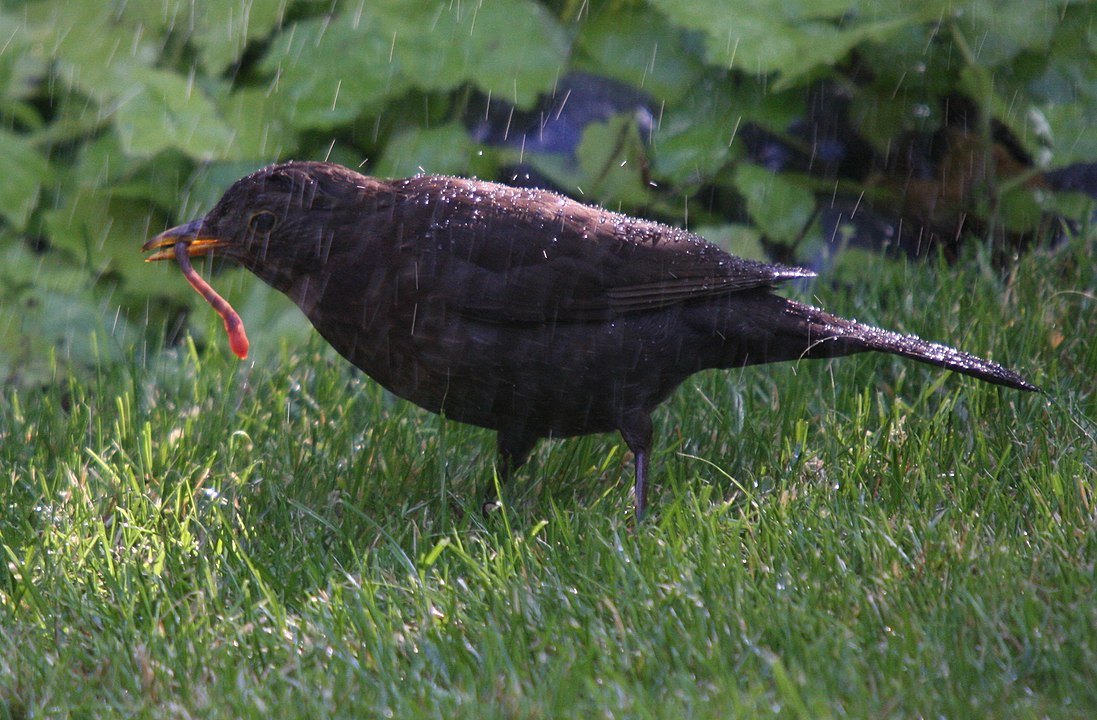The days are getting longer, the grass is starting to grow again and so is the moss in the lawn. The lawn looks lifeless after winter; fresh green tufts of moss are emerging. Dead blades of grass are hidden between the green. Some gardeners start talking about scarifying, about the ‘felting’ of the lawn. Between the gr
What to do? Scarify? Or fertilize and maybe sprinkle some lime against moss?
Scarifying – machining the lawn, where moss and death gr
The soil life, that underground army of earthworms, sow bugs, fungi and bacteria, live on dead organic matter and process this while eating into nutrients that can be absorbed by plants. Scarifying deprives the soil life of its source of nutrition and the soil life deteriorates as a result. In the absence of worms, the soil hardens and the water permeability decreases. When it rains, puddles form on the lawn. After scarifying, fertilizing with an organic fertilizer (granules of cow and horse manure) is necessary. Reseeding the resulting bare spots is also necessary, otherwise the empty space will be taken up by pioneer plants such as ryegrass, bindweed, speedwell, clover and creeping buttercup.
Soil life
Let the soil life do its job instead of scarifying. Give the worms, sow bugs and centipedes food in the form of organic fertilizer and compost. The soil life springs up after the winter break, multiplies very quickly and breaks down the dead plant material, the felt layer. Earthworms scarify the lawn and prevent the soil from compacting, so that rainwater and air penetrate deep into the soil. the gr
Iron sulfate
Iron sulphate is sometimes used to kill moss: a fertilizer that also kills moss. However, iron sulphate is also deadly for soil life, so do not use it. Also because iron sulphate is unsafe stuff. It leaves rust stains on stones and floors and accidentally inhaling it is downright unhealthy. Keep pets (dogs and rabbits) away from ferrous sulfate treated lawns.
Moss formation is prevented by mowing not too short (< 4 cm), ensure good drainage and regularly sprinkle lime granules in the spring. Keeping the lawn slightly high will reduce the light of moss and slow down growth. In general, 5 cm is the best cutting height in the summer, which prevents burns and rapid dehydration during heat. In winter, gr
Admittedly, such a natural lawn will look a little less tight than a fertilizer-sprinkled, scarified, super-green lawn. Fertilizer is the fast food among fertilizers: the grass ‘explodes’, but since fertilizer contains no organic matter, it does nothing for the soil; spreading fertilizer is short-term work. The soil is impoverished and an excess of fertilizer is leaked into the surface water. The result is a suffocating algae growth.

A healthy, living lawn
A non-scarified lawn has worm mounds and a thin layer of humus between the grass blades. In this layer live the worms, the sow buds and the centipedes. Blackbirds and thrushes come to look for earthworms on such a healthy, living lawn. Or a visiting seagull that seems to dance. In reality, the gull kicks on the ground, creating vibrations so that worms and insects come to the surface (ha, rain!) after which they are picked up by the gull. This is how a seagull dances its meal together.
